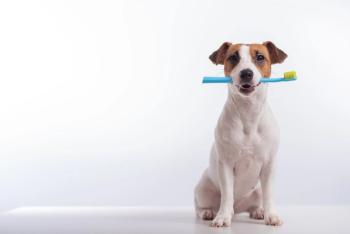
Feedlot lameness prevention (Proceedings)
Incidence of feedlot lameness varies by feedlot from .03% to 2.3% of cattle inventory on a health data base that includes 5,540,000 cattle in feedlots that vary in capacity from 5000 to 80,000 head. The average lameness incidence is .51%.
Incidence of feedlot lameness varies by feedlot from .03% to 2.3% of cattle inventory on a health data base that includes 5,540,000 cattle in feedlots that vary in capacity from 5000 to 80,000 head. The average lameness incidence is .51%. Lameness case fatality rates can approach 15% and railer rates meet or exceed case fatality rates. Losses due to lameness are understated on most health summaries because significant numbers of lame cattle are left in pens to recover without treatment. The majority of lameness cases are infections or injuries following trauma associated with transport, receiving, and arrival processing. Proper interactions between caregivers and cattle can reduce lameness risk.
Caregiver Responsibilities
Receiving Cattle
Lameness prevention responsibilities begin at the unloading chute. Cattle relocation is a stress. The first impression cattle have of their new home is of critical importance. Unloading and weighing cattle is an opportunity for handlers to convince cattle to trust caregivers enough to be willing to walk by them with confidence. Provide stable footing at the receiving area by covering concrete with wood shavings or rubber mats. Avoid sharp turns at the bottom of the chute to prevent cattle from falling or bumping shoulders and hips.
Develop specific strategies for taking new cattle to home pens. Ask cattle to file by handlers and if possible send cattle beyond their home pen so they stop, turn, and volunteer to come back by a handler to enter their new home. Always have fresh hay and ration in the bunk and clean water present prior to sending cattle home. Follow cattle into the pen and place cattle at the bunk. Encourage pen riders to train cattle to travel straight in single file fashion. This investment in time will facilitate processing and will encourage cattle to express arrival health and lameness. Document lameness present on arrival and communicate arrival issues to order buyers and sale barns.
Arrival Processing
Teach handlers how to remove cattle from home pens. Cattle that volunteer to leave their home pen are more willing to file through processing facilities. Handlers should use no vocalization and be willing to form a straight line in a T to the gate to signal cattle to leave the pen. Develop an understanding of cattle flow within processing teams. Never bring cattle to a crowding tub or Bud Box if the alley is full. Bring small drafts of cattle that can go immediately to the chute. Teach handlers to use gentle negative pressure to convince cattle to volunteer to enter facilities to reduce the use of no-backs. Monitor alleys and chutes for sharp surfaces that could cause foot lacerations. Cover concrete surfaces with wood shavings to prevent toe abrasions and sole abscesses. Cattle that are confident of their footing require a fraction of the pressure required to move cattle that are on slick surfaces. Teach handlers to work from the front of cattle to encourage cattle flow into the chute. Adjust the bottom of chutes to allow cattle flow and prevent hoof damage. Teach chute operators appropriate use of hydraulic pressure. Provide rubber mats in front of the chute and expect cattle to walk out of the chute.
Processing Facility Design
Revise contemporary facility design. Fences covered with sheet metal and solid alleys increase cattle anxiety, interfere with their peripheral vision, and increase lameness risk. Cattle need to see what is pressuring them and will volunteer to enter facilities if they can see where they are expected to go. It should be obvious to cattle that an exit exists. Cattle prefer to go back to where they came from and are willing to go around handlers. Investigate the use of the Bud Box facility design and train handlers to send cattle through a straight, open, adjustable alley leading to the chute. Lameness risk is reduced when cattle are willing to walk to the chute, stop to be processed, and walk out of the facility.
Buller Risk
Buller activity is a significant source of feedlot lameness, reduces performance, and requires additional labor. Attention to detail during arrival acclimation, processing, and pen riding reduces buller incidence. Arrival bunk management is a critical part of buller control. Train pen riders to identify pens with buller potential and insist that riders use exercise and pen riding methods that reduce confinement anxiety. Watch for initiators of buller activity and move those cattle temporarily into the drovers alley to increase their desire to eat and drink.
Bunk Management
Manage new cattle to achieve uniform intakes within pens. Caregiver goals include expecting all cattle to eat similar percentages of their body weight every day of the feeding period. Adequate bunk space, timely feed delivery, and cattle acclimation efforts will reduce noneaters, reduce laminitis cases, and reduce footrot risk. Many cattle with laminitis present at harvest are cattle that lacked confidence to compete at the bunk during the arrival period. Footrot risk increases following rumen acidosis. Zinc methionine has value in footrot prevention.
Disease Resistance
Control of respiratory disease through sound vaccination programs, arrival nutritional management, and new cattle acclimation efforts reduces the risk of infectious lameness cases caused by Histophilus, Pasteurella, and Mycopalsma organisms.
Conclusion
Feedlot lameness incidence can be reduced by attention to detail in areas of cattle procurement and arrival management. Caregivers can be a source of stress to cattle as they arrive and are processed or handlers can choose to greet each new group of cattle with a positive attitude and be willing to teach cattle to respond to simple handling concepts. The combination of concrete surface management, facility design revisions, detailed bunk management, and handler training reduces feedlot lameness risk.
Newsletter
From exam room tips to practice management insights, get trusted veterinary news delivered straight to your inbox—subscribe to dvm360.




